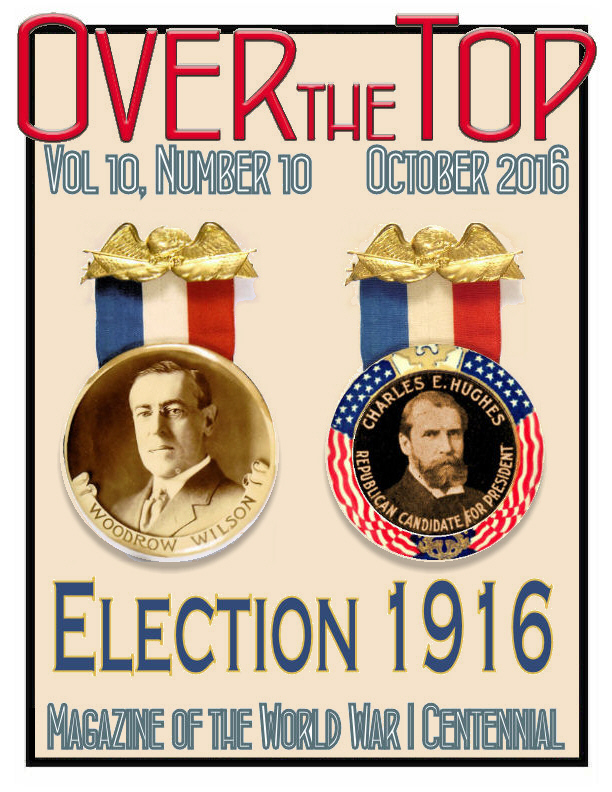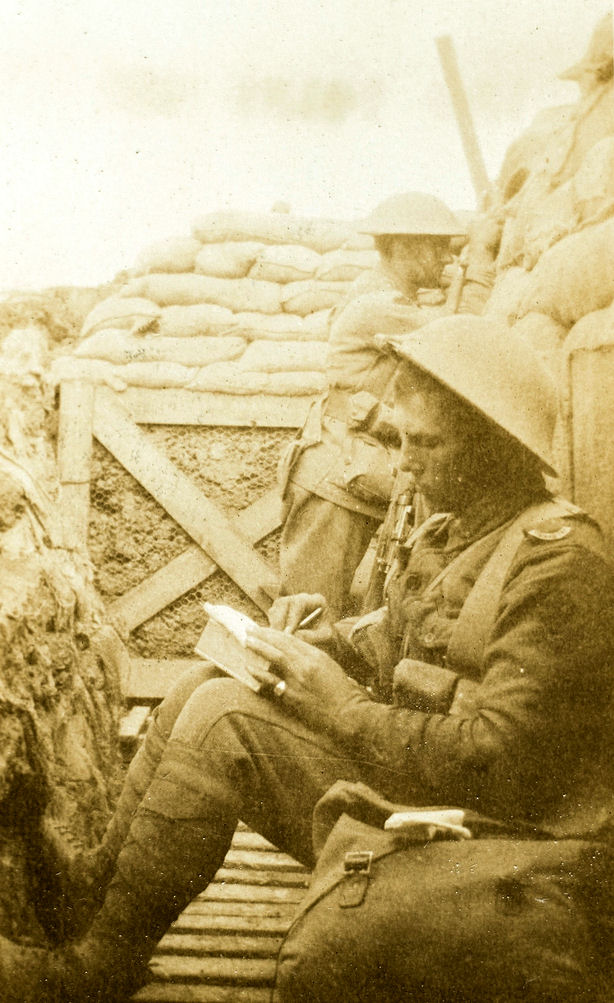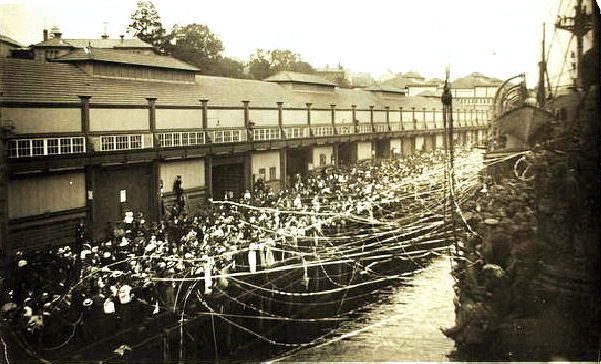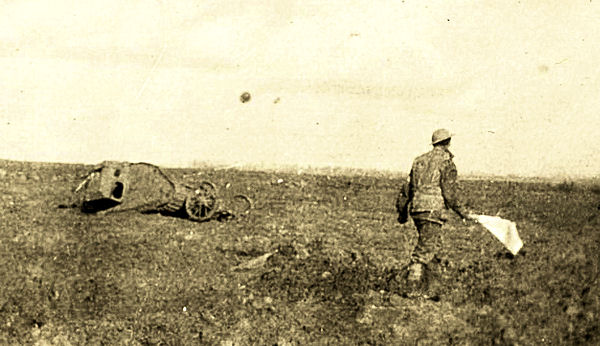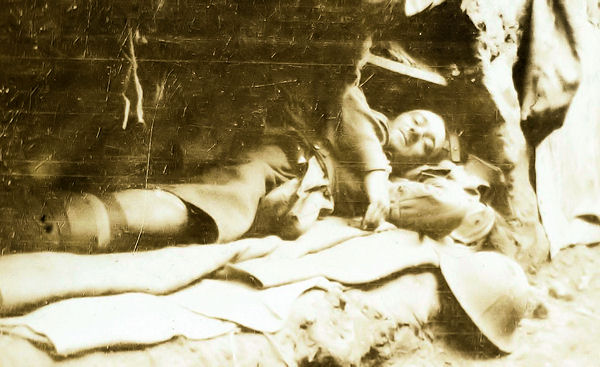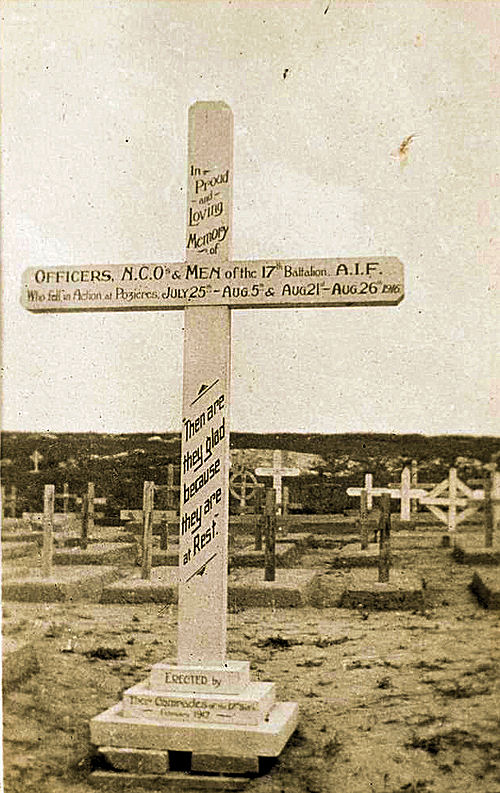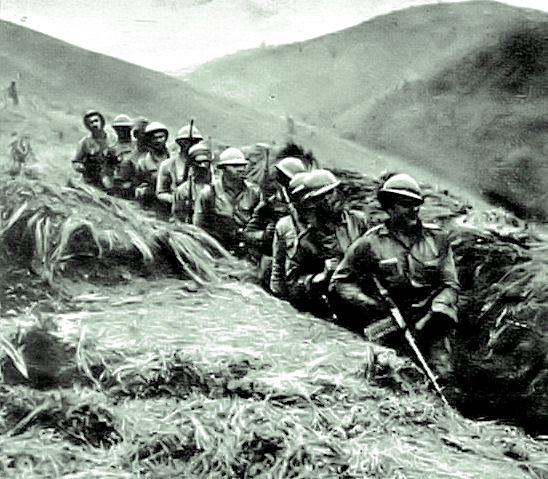
October
2016 |
 |
|
|


Countdown to Veterans Day
The U.S. World War One Centennial Commission has helped organize a broad program that uses the theme Countdown to Veterans Day to raise awareness about veterans from all our wars. Their strategy is to build and expand a network for distributing historic information about the veteran's service, inclusive, of course, of the First World War. The project's partners, materials, events, and volunteer opportunities are described at their spiffy new website: (LINK). I've promised to support their effort, and in this issue of the Trip-Wire I've started by describing some of the resources at Worldwar1.com (our umbrella website) that are available for the Countdown.
This new initiative has brought back a happy recollection for me of another Veterans Day — 11 November 1988. There was a big World War I commemoration that day, organized at the San Francisco Presidio by the dearly departed Great War Society. My job was to find some WWI veterans, invite them, and deliver them safely. On my first probe, I struck gold at the California Veterans' Home, in Yountville, north of the Golden Gate. There, I discovered four residents, three guys and a gal, who had served overseas (the men in the European theater, our nurse had somehow made it to Serbia), and they all accepted the invitation to join us for the day. I didn't realize at the time that my adventure had just begun.
They were all dressed in their best outfits and were really jolly when I picked them up the morning of 11 November. Ten miles from Yountville, there was an initial sign of trouble — the first request for a toilet stop. It didn't set a pattern for the day, however. I did grow a little concerned again, when I heard a couple of them napping in the back seat before we got to the venue. I was quickly gaining an appreciation of the realities of being responsible for four individuals whose average age was over 90.
When we arrived at the Presidio, there was a big crowd, and —surprisingly — lots of press and TV coverage. I was soon elbowed out the way and sent packing to the rear area, so I had to monitor my group from a distance during the main ceremony at the National Cemetery. The veterans were seated in a place of honor near the stage and given individual introductions by the master of ceremonies. As the day proceeded — to my utter astonishment — they evolved into the stars of the event, each, apparently, a born celebrity, giving interviews to the media (they looked great on the TV news that night), posing for photos, even autographing the programs of audience members. At the luncheon they were invited to say a few words. Most passed on the opportunity, but one fellow, the group's sailor, stood up and gave an outstanding impromptu talk about life on his coal-fired battleship, the USS Delaware, and the ship's service with the Grand Fleet. I'll never forget how horrible he made coaling-day sound. The really enjoyable part of his talk involved their return to the States. The Delaware rotated home before the Armistice (it had not seen any combat), but the white caps were still treated as returning heroes everywhere they docked. You could tell his homecoming was one of the happiest memories of the old sailor's life.
I wish I could give more details about them here. It was just too hectic that day with the all the logistics for me to document things, and over the years I've forgotten their names. But I can still see them when I close my eyes, and I'm still proud to have spent that day with them. MH

|
2016 Events
2016 National WWI Symposium
The World War I Historical Association, the General Douglas MacArthur Foundation, and the World War One Centennial Commission are holding this year's event on 21-22 October in Norfolk, VA. This year's theme is "1916: Sex, Planes, and Disasters." DETAILS
1916 — TOTAL WAR Symposium
4-5 November, 2016 at the National World War One Museum, Kansas City, MO. Explore the pivotal year of 1916, where global socio-political tensions created by World War I continued escalation and irrevocably changed the economic, military, and cultural landscape of the world. DETAILS
|
|
100 Years Ago
A U.S. Presidential Campaign
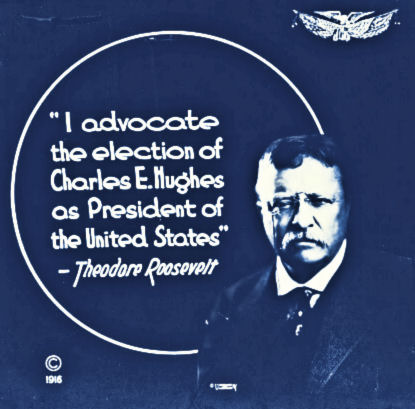
T.R. Was Backing His Former Rival

Pozières Ridge at the Somme
On my recent group tour to the Somme, I was able to explore areas in greater depth than time allowed in the past. On my earlier tours of the area, I always included the battle for Thiepval Ridge, and the Canadian Corps' notable capture of Courcelette and its fortified sugar refinery. However, this time I gained an appreciation of what transpired on Pozières Ridge, between those two sites.
 Photo Essay and Maps: Pozières Village and Ridge
Photo Essay and Maps: Pozières Village and Ridge
 The Battle for Mouquet Farm: Sgt Nutall's Account
The Battle for Mouquet Farm: Sgt Nutall's Account
 Canada Arrives at the Somme (PDF document)
Canada Arrives at the Somme (PDF document)
 Capturing Mouquet Farm
Capturing Mouquet Farm
 The Fight for Regina Trench
The Fight for Regina Trench
 Photo Essay: Courcelette-Regina Trench Today
Photo Essay: Courcelette-Regina Trench Today
 A U.S. Air Force Presence at Regina Trench Cemetery
A U.S. Air Force Presence at Regina Trench Cemetery

Who Were "Pershing's 100?"
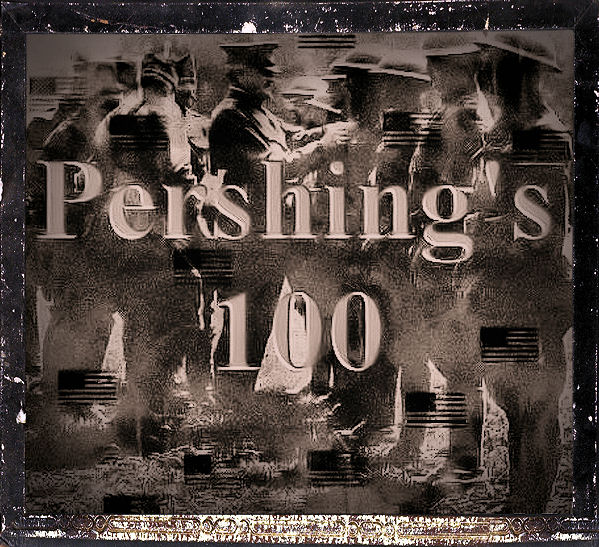
General Pershing Presenting Decorations
Shortly after the Armistice, Secretary of War Newton Baker requested the AEF Commander to send a number of accounts of Doughboy heroism in the war. It seems funds still had to be raised to pay for the nation's victorious effort. Pershing's staff compiled "A List of One Hundred Individual Acts of Extraordinary Heroism Performed by Officers and Soldiers of the American Expeditionary Forces." When the document was published in the Ladies Home Journal as a series during the summer of 1919, it was given the title "Pershing's 100."
The list covers the ground forces only; naval personnel, aviators, and specialized branches like the Signal Corps appear to be neglected, as are some famous names like Alvin York. The 100 list was obviously rushed, but it provides a broad at the combat experiences of the Doughboys who were on the front line. The entire document can be found with the other resources on the members of the AEF on the "Second Army" page of our Doughboy Center website, discussed further on page 2, below. (PERSHING'S 100 LINK)

Fighting in East Africa, 1916
It was at this stage, and after our initial success, that the rainy season set in; and that is another great feature of German East Africa. I had read much about it, and I had heard more; but the reality far surpassed the worst I had read or heard. For weeks the rain came down ceaselessly, pitilessly, sometimes three inches in twenty-four hours, until all the hollows became rivers, all the low-lying valleys became lakes, the bridges disappeared, and all roads dissolved in mud. All communications came to an end, and even Moses himself in the desert had not such a commissariat situation as faced me.
Jan Smuts, 1918 Magazine Article
|

|

U.S. Centennial Organizations & Resources
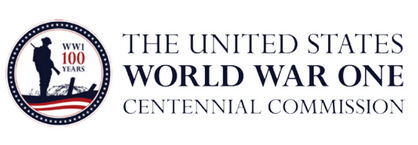
worldwar-1centennial.org/
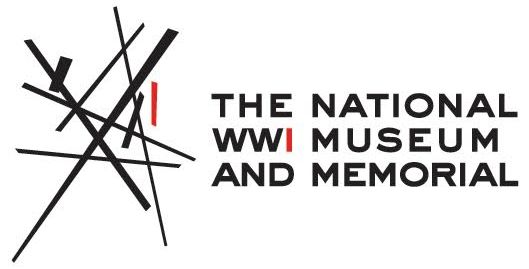
theworldwar.org/
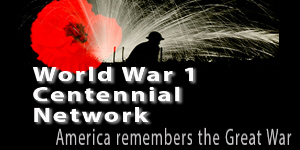
www.ww1-centennial.org/
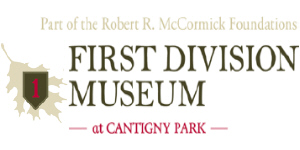
www.firstdivisionmuseum.org/

www.abmc.gov/
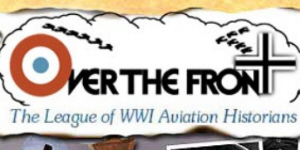
www.overthefront.com/
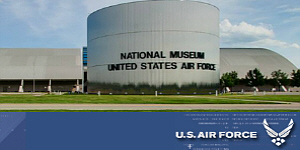
www.nationalmuseum.af.mil/
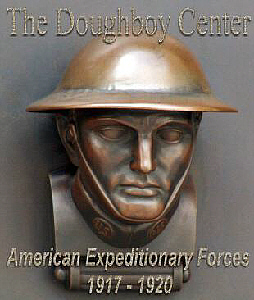
www.worldwar1.com/dbc/
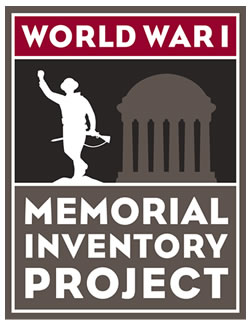
facebook.com/wwiinventory

wisconsinhistory.org/

www.uswarmemorials.org/
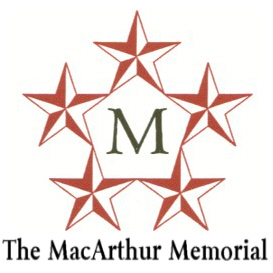
www.macarthurmemorial.org/

www.facebook.com/saving.hallowed.ground/
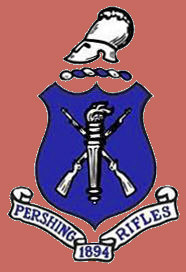
www.theprgroup.org/
Support Worldwar1.com's Centennial Effort
Shop at Amazon.com
|
The Centennial Ticker
Get Ready for Veterans Day
Meet the Members of the AEF
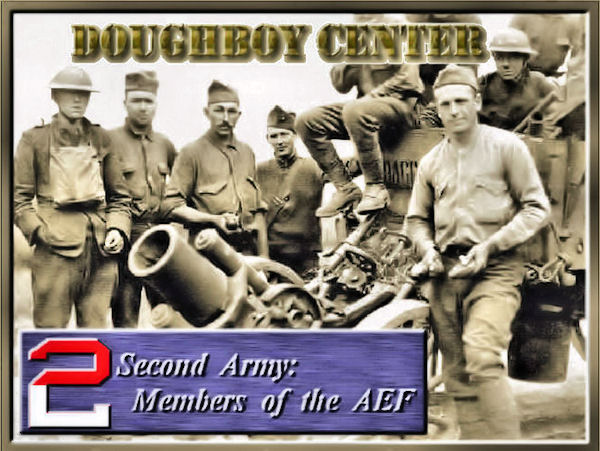
Where You Can Meet a Lot of WWI Veterans and
Learn Their Stories?
The team at the World War I Centennial Commission has come up with a crackerjack idea: to help raise awareness of the achievements and sacrifices of our Great War generation by tying their efforts to all the other groups — veterans' organizations, historical societies, and such — who are dedicated to commemorating November 11th with visibility and importance. I have promised to support the Commission's efforts in my publications. Not to brag (too much), but one of the best places to find out about the experiences of the men and women of the AEF, of all services, and volunteers as well as military, is in our nearly 20-year-old Doughboy Center (DBC) website. We have information about hundreds of the veterans, their photographs, details of their service, and a composite firsthand account of their time "Over There." When it first came out, the DBC won many awards and was recommended by a lot of historical groups. Today, its graphic look is dated and it lacks any snazzy hi-tech features, but its information is still solid. As far as I know, for example, it is still the only site where you can find the full text of "Pershing's 100" that Old Fritz mentioned above. Below are some examples of the many features we offer on individual participants. All of these and more can be accessed here: (DBC Second Army LINK)
In Their Own Words
The AEF Experience in Firsthand Accounts
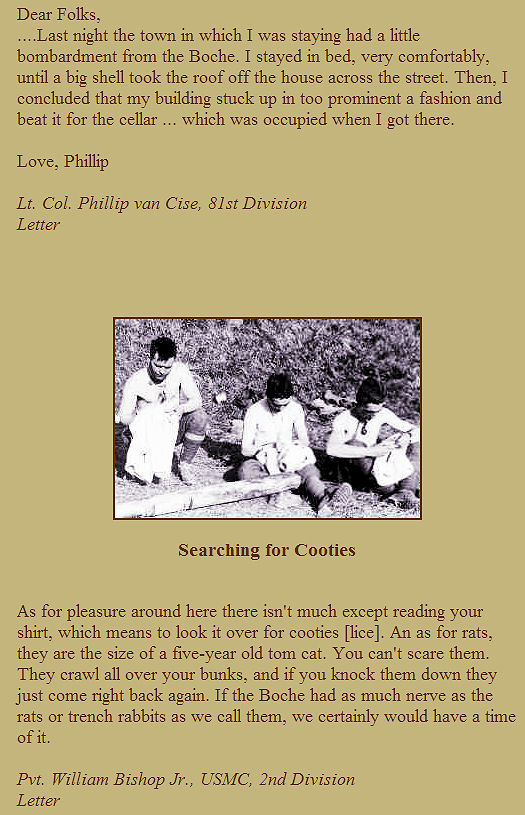
The Western Front Experience Described Using Hundreds of Entries from Letters, Diaries, Interviews, and Unpublished Manuscripts
Letter Collections, Diaries, and Biographies

80 of the Best Manuscripts and Websites We Have Discovered Over the Years.
The Doughboy Photo Album, I
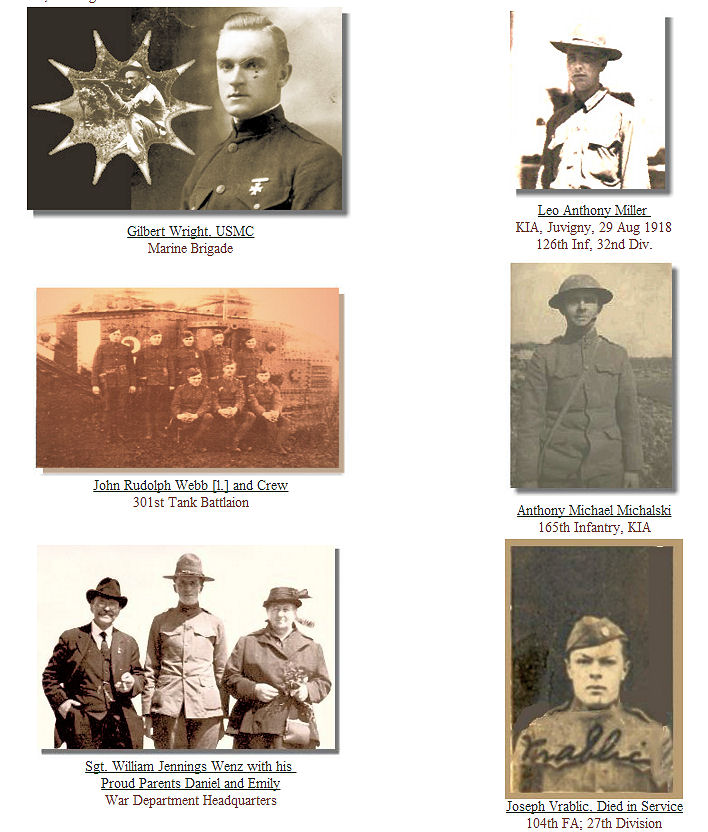
250 Individual and 50 Group Photos from All Services and Many Volunteer Organizations
The Doughboy Photo Album, II
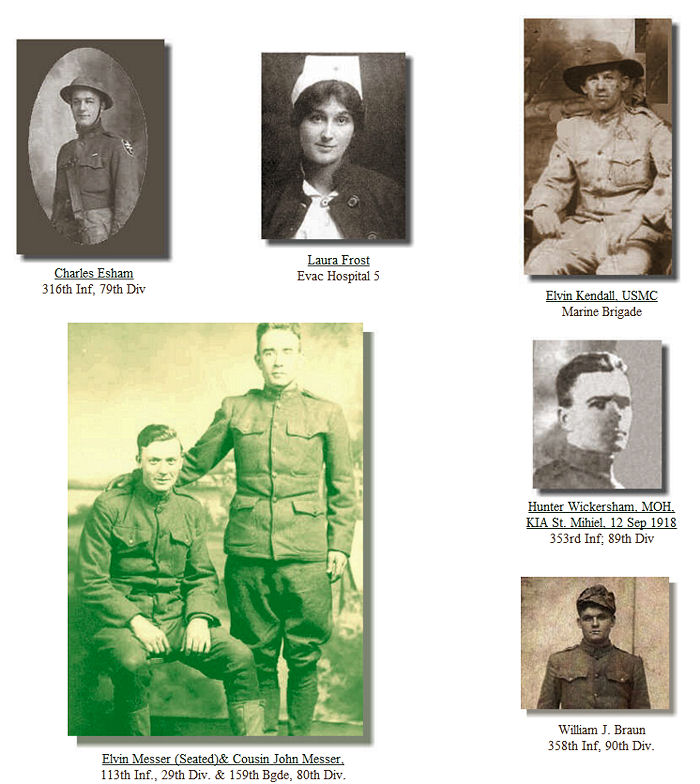
Each Entry Is Annotated with Service Details
The Doughboy Photo Album, III
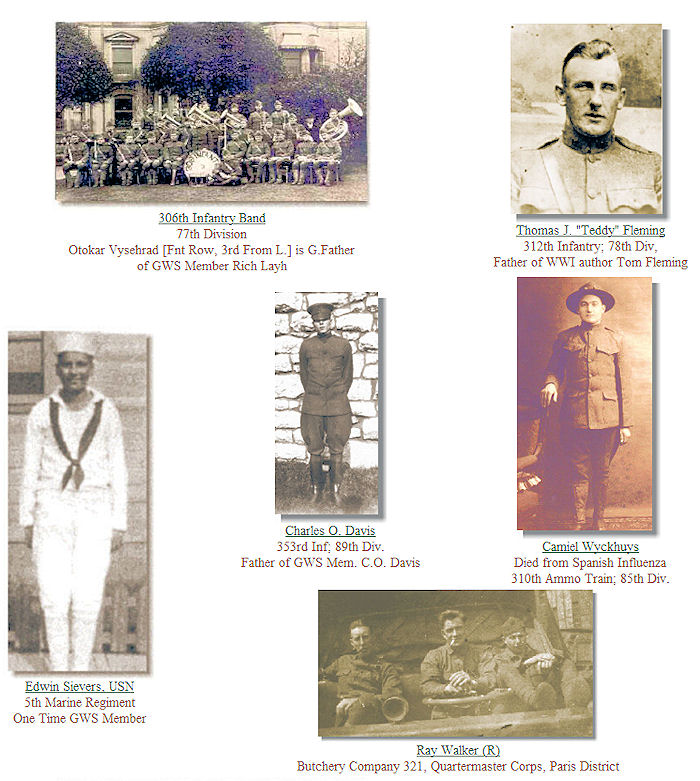
Remember, You Can See All These Sites and Many Others at:
|
|

Fall 1916: Rumania Staggered
After remaining neutral for two years, Rumania — miscalculating the apparent success of Russia's Brusilov Offensive — chose to enter the war on the side of the Entente on 27 August 1916. The government's prime motive, like Italy's in 1915, was to obtain more territory. King Ferdinand and Premier Ion Bratianu, however, had grossly overestimated the fighting power of their army and the weakness of the Central Powers.

Rumanian Infantry Form a Skirmish Line
Following an initial advance across the Transylvanian Alps into Hungary, Rumania was invaded from two directions. From Bulgaria in the south, a combined force of Germans, Turks, and Bulgars under the command of Field Marshal August von Mackensen attacked between the Danube and the Black Sea. Rumania moved troops from the advancing forces in Transylvania to oppose the counter-invasion which threatened all of their Black Sea ports as well as Bucharest, the capital. Then in late September, General Falkenhayn, recently demoted as chief of staff, arrived to take command of the German Ninth Army in Transylvania to the north. He quickly attacked, capturing Hermanstadt and driving two Rumanian divisions back into the mountains.
In quick order the two German commanders and a third Austro-Hungarian force relentlessly crushed the Rumanian opposition. By 5 December Bucharest had fallen, Rumania's oil fields had been set ablaze, and three-fourths of Rumania was occupied. The arrival of Russian forces staved off total disaster. A defensible line was formed on Sereth River in the northeast allowing Rumania to retain a major portion of Moldavia.
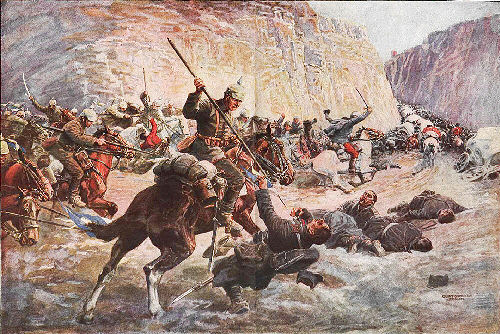
Germany Cavalry Pursuing Rumanian Troops
There was little action in the next year, but in December 1917, the exhausted Rumanian government had to ask the Central Powers for terms. They had lost a war and suffered over 400,000 casualties for their territorial ambitions. Things would change dramatically for Rumania at the Paris Peace Conference, but that is a story we will address in a later issue of the Trip-Wire.
|
|

Our 2017 Centennial Battlefield Tour Schedule

2017 Program
Valor Tours is happy to announce its 2017 World War I Centennial Battlefield Tours. Our brochure is currently in preparation — subscribers to the Trip-Wire will receive it via email as soon as it is ready. Just click on the "Sign Up" button on the top of the page if you haven't registered yet. Here are some details for you:
8 – 15 May 2017: Flanders 1917 Campaign
Includes: Vimy Ridge, Messines, and Passchendaele
24 July – 3 August 2017: Caporetto and the Italian Front
Includes: The Eleven Battles of the Isonzo, Caporetto 1917, Monte Grappa, and the 1918 Line
The full brochure covering the trip and registration details can now be downloaded at:
http://www.worldwar1.com/pdf/ValorTours_2017Flyer.pdf
|
|
|

|

This Month's Recommended Books
The Best Reading on the Italian Front
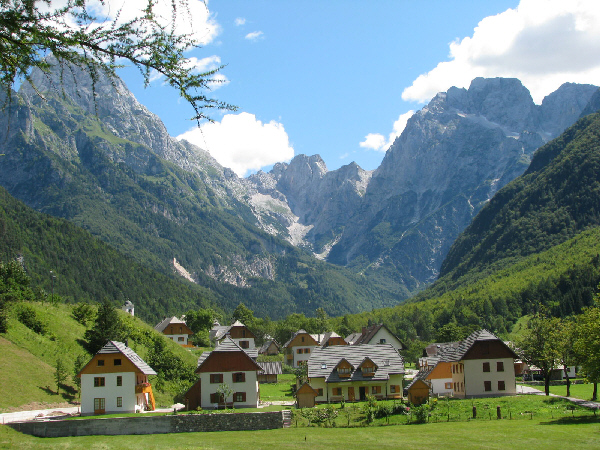
Hard to Believe This Was Once a Terrible Battlefield
The Terrain Just North of Kobarid (Caporetto)
I've begun my planning for my 2017 battlefield tours and my program includes visits to the Caporetto Battlefield and the Italian Front. I always research and prepare a list of the best books on the sites we will be visiting together. Here is the list I'll be sending our clients who will be visiting Austria, Slovenia, and Italy with our group.
|
|
|
|
Looking for More WWI Reading Material?
Worldwar1.com has a team of reviewers looking over the avalanche of new books on the war. Every Tuesday, we present a review of a new or classic work that we recommend at our blog, Roads to the Great War (LINK). Use the site search engine if you are interested ina particular subject.
|
|
|
|
|
|
|
|






